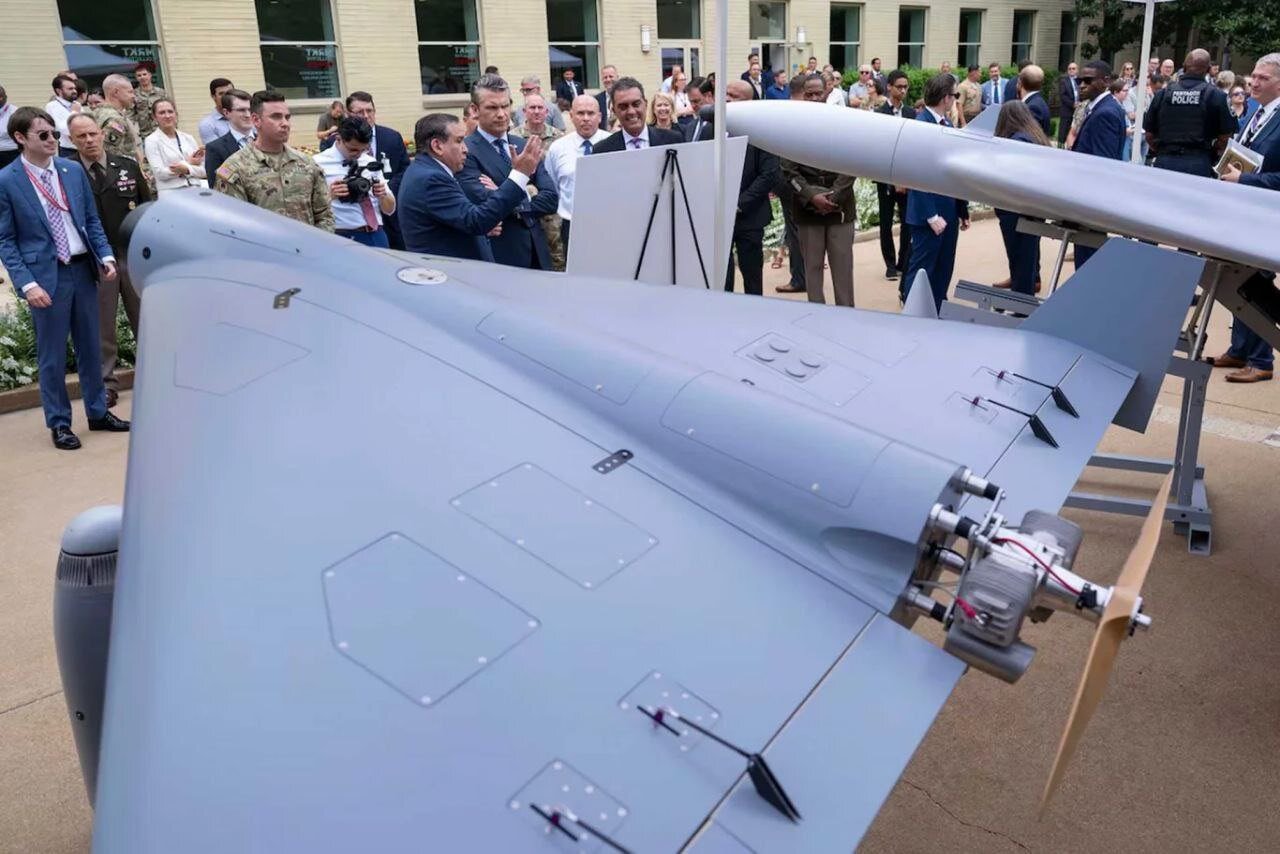The new US drones made in Iran
The cloning of Iranian Shahed drones comes after years of US dismissal of Iran's military advancements

TEHRAN – Iran's military development is a singular story. Few nations can claim to have independently transformed their military capabilities as dramatically as Iran has in just four and a half decades.
Think back to the 1980s. When Saddam Hussein's Iraq invaded, the idea of Iran winning seemed impossible. Backed by both Western powers and the Soviet Union, Iraq wielded a formidable arsenal: cutting-edge tanks, missiles, and even the horrifying specter of chemical weapons. Iran, in stark contrast, scraped by with a mix of antiquated, often defective, equipment sourced from a handful of sympathetic states, and the once-proud F-14 fighter jets, now grounded by a crippling lack of spare parts. Iranians were desperately short on armor, air support, and even basic protection like gas masks. But they decided that they wanted to stand their ground, practically empty-handed, and that's where Iran's future began.
The invasion taught Iran a hard lesson: they had to depend on themselves if they wanted to protect their revolution. With incredible effort and a powerful will, Iranian military leader began meticulously dissecting the remnants of Western weaponry and the few, rudimentary systems acquired from their few friends. Hassan Tehrani Moghaddam, who became known as the "father of Iranian missiles," is said to have learned about Libyan and Syrian weapons – weapons Iran was using – while serving tea to the foreign operators who had been sent to Iran specifically to keep the technology out of Iranian hands. Those were tough times, but important ones. Now, forty years after the Iran-Iraq war ended with Saddam failing to take any Iranian territory, Iran isn't just a force to be reckoned with in West Asia. It has built up a missile and drone arsenal that's even making countries like the United States, which has been the world's biggest arms supplier since WWII, sit up and take notice.
Iranian missiles showed just how dangerous they are during the 12-day war that Israel started in June. The sophisticated air defense systems of Israel, as well as those of American, British, French, and some Arab forces stationed in the region, couldn't stop the Iranian projectiles – believed to be some of the country’s older missiles – from hitting the occupied territories and striking important military, intelligence, and energy sites. The destruction was widespread, unlike anything seen before in the history of the Zionist regime, and it led Israeli officials to turn to their main backer, the United States, to ask for a ceasefire.
But it's Iranian drones, especially the kamikaze types, that everyone's been talking about for a few years now. They're precise and cheap weapons that either hit their targets perfectly or force the enemy to waste millions of dollars on expensive air defense missiles to take down a drone that only cost a few thousand.
These drones have become a hot item on the military market. According to reports that haven't been officially confirmed, countries in Europe, Asia, Africa, and South America have been buying, or trying to buy, these weapons from Iran. And now that Washington has unveiled its own copy of Iran's Shahed drone, the potency of Iranian kamikaze drones is clearer than ever.
On July 16, 2025, the U.S. military unveiled the LUCAS, or Low-cost Uncrewed Combat Attack System, developed by Arizona-based defense contractor SpektreWorks. The drone looked like an exact clone of Iranian Shahed ones when being shown to U.S. Secretary of Defense Pete Hegseth during an exhibition in the Pentagon courtyard. The design, function, and mission of the drone are remarkably similar to Iran’s Shaheds, but it still costs more, weighs more, has a lower range, and less maneuverability.
This comes after the U.S. dismissed Iran’s military advancements for years on end. Even during Donald Trump’s previous administration, one of his top men said Iran’s weapons were not real, rather they were photoshopped pictures.
But the reality is now undeniable. The U.S. military’s unveiling of the LUCAS drone is perhaps the highest form of flattery—or at least, the clearest admission of Iranian ingenuity. The lesson Iran is now teaching the world in 2025 is simple: There are many things nations can achieve when they refuse to surrender to external pressure.
